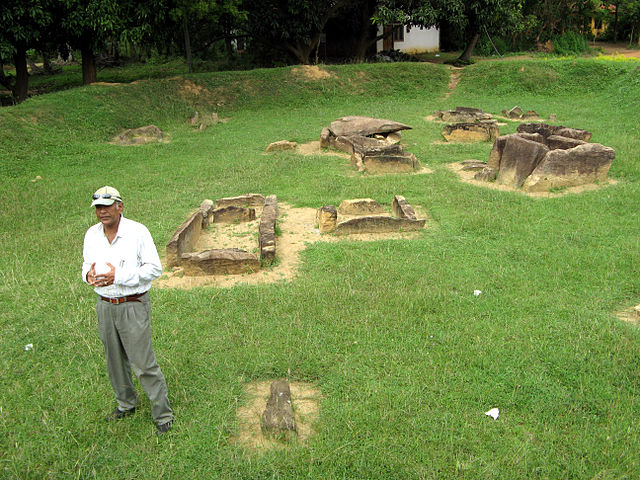
Cist Burials
Ibban Katuwa, Sri Lanka
Early Iron Age people buried their dead in lidded chambers called cists, that were constructed from slabs of stone. These are secondary burials. The body would first be buried in soil, and allowed to decay naturally until only its skeleton remained; its bones would then be collected and reburied in a pot within the cist, along with a variety of grave goods such as food, beads, and weapons.
The burials at any given location, such as this one, would typically belong to a single family group (lineage). A lineage symbol is often carved onto the capstones. Preliminary unpublished (2008) work also suggests, excitingly, that these cists and their burial pots may align astronomically, to the equinoxes.


